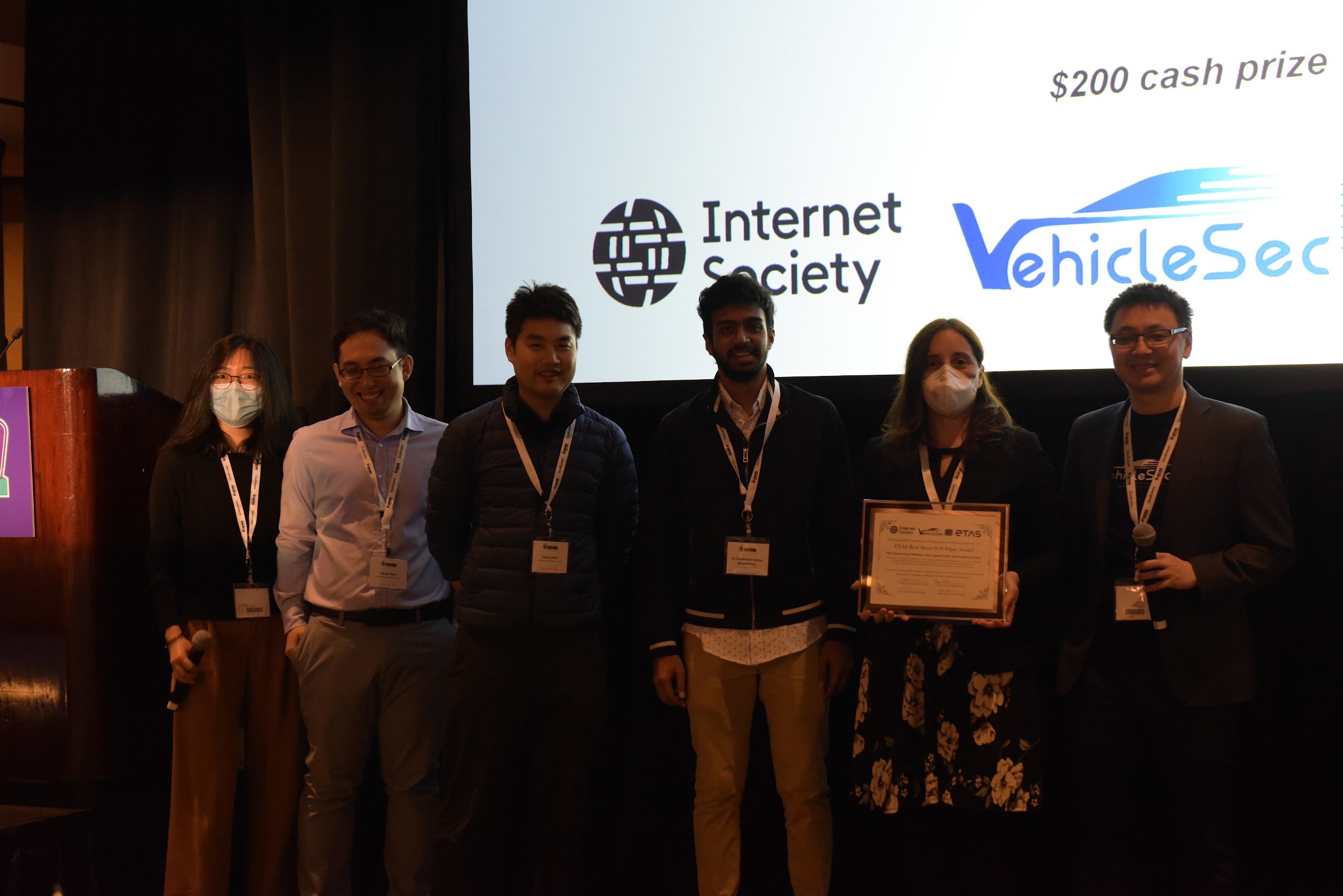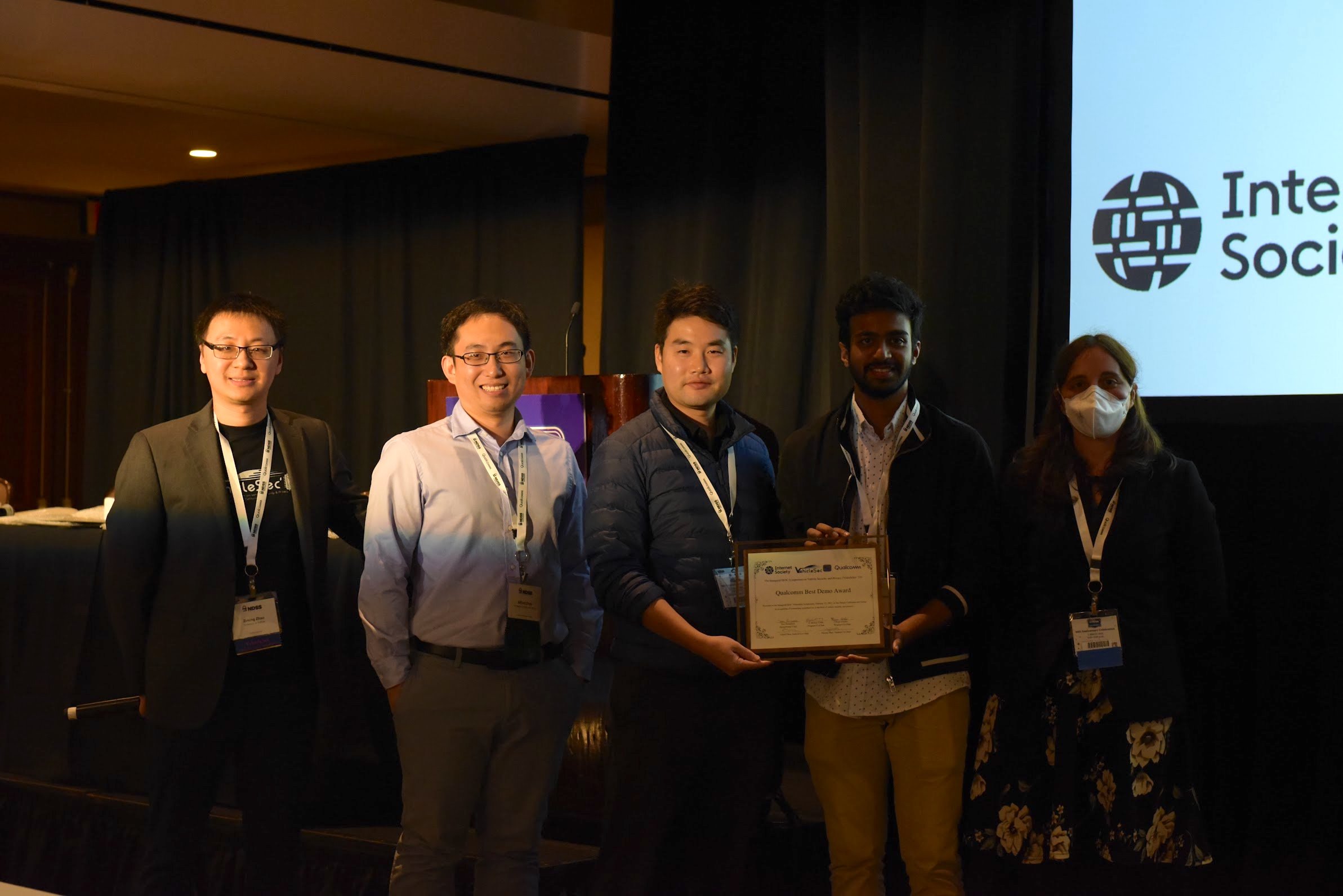With advancement in Connected, Autonomous Vehicle (CAV) technology, comes new concerns for safety and security. Researchers have developed a new kind of attack which affects a CAV’s ability to accurately recognize a traffic sign.
The collaborative project, “WIP: Infrared Laser Reflection Attack Against Traffic Sign Recognition Systems,” received two awards at the Inaugural Symposium on Vehicle Security and Privacy 2023, co-located with the Network and Distributed System Security Symposium (NDSS) 2023. The symposium was held in San Diego, California from February 27 – March 3, 2023.
“We develop a novel adversarial attack on traffic sign systems using infrared laser light. While invisible to humans eye, the attack can alter the traffic sign recognition in autonomous vehicles (e.g., the car erroneously recognizes a speed limit sign as stop sign),” said University of Florida Ph.D. student Sri Hrushikesh Varma Bhupathiraju, co-first author of the paper.
The work-in-progress (WIP) paper received two awards at VehicleSec 2023: the ETAS best short/WIP Paper Award and the Qualcomm Best Demo Award.

“In this work in progress, we present our preliminary results in indoor scenarios. We show that the attack can reach a high attack success rate (up to 100%) compared to previous literature works that only explore visible light attacks,” said Dr. Sara Rampazzi, assistant professor in the Department of Computer & Information Science & Engineering (CISE) at UF. “Next, we plan to investigate the attack capabilities in real-world autonomous driving scenarios in a variety of environmental conditions and elaborate a defense strategy to mitigate the threat. This research is part of my lab’s ongoing effort to investigate the security and safety of autonomous vehicles against physical attacks on sensors.”
Paper Abstract:
All vehicles must follow the rules that govern traffic behavior, regardless of whether the vehicles are human-driven or Connected, Autonomous Vehicles (CAVs). Road signs indicate locally active rules, such as speed limits and requirements to yield or stop. Recent research has demonstrated attacks, such as adding stickers or dark patches to signs, that cause CAV sign misinterpretation, resulting in potential safety issues. Humans can see and potentially defend against these attacks. But humans can not detect what they can not observe. We have developed the first physical-world attack against CAV traffic sign recognition systems that is invisible to humans. Utilizing Infrared Laser Reflection (ILR), we implement an attack that affects CAV cameras, but humans can not perceive. In this work, we formulate the threat model and requirements for an ILR-based sign perception attack. Next, we evaluate attack effectiveness against popular, CNN-based traffic sign recognition systems. We demonstrate a 100% success rate against stop and speed limit signs in our laboratory evaluation. Finally, we discuss the next steps in our research.

